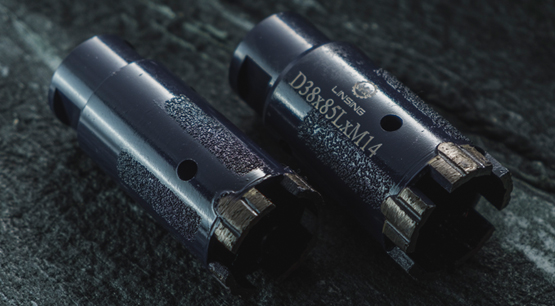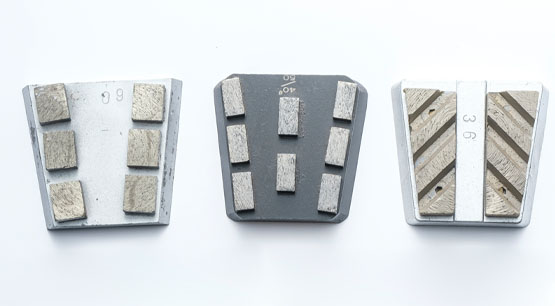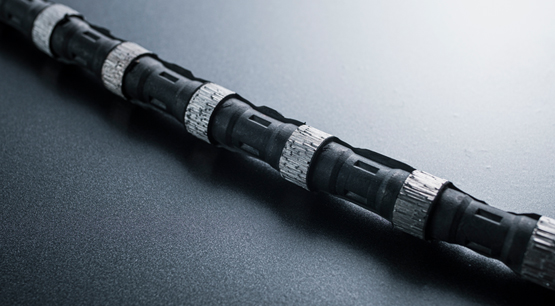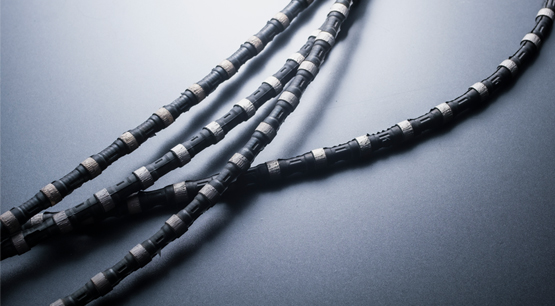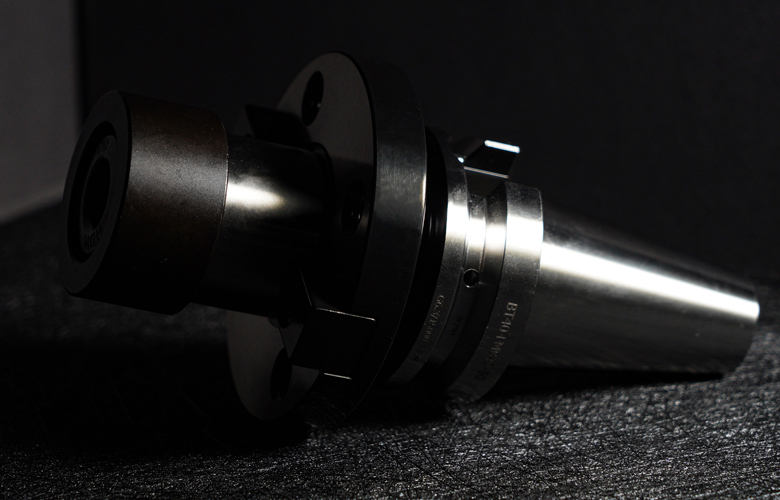Introduction
The diamond wire saw is a highly efficient and environmentally friendly tool used in the mining of natural stone such as marble and granite. Compared to traditional methods like blasting and conventional sawing, diamond wire saws offer higher cutting precision, better surface quality, reduced dust, and lower noise levels. This article provides a detailed explanation of the working principles, structural components, operational steps, precautions, applications, and development trends of diamond wire saws in stone quarries.
I. Working Principles and Structural Components of Diamond Wire Saws
1. Working Principles
The diamond wire saw operates by wrapping a diamond wire around drive wheels and guide wheels. This wire is driven by an electric or hydraulic motor to rotate at high speed, cutting through the stone. The diamond wire is embedded with diamond beads, each consisting of a steel bead, a diamond layer, and a steel ring. These diamond beads grind and cut the stone through continuous friction, impact, and abrasion.
2. Structural Components
The diamond wire saw mainly consists of the following parts:
- Diamond Wire: Composed of a steel wire rope, diamond beads, and springs. The steel wire rope is the main load-bearing component, the diamond beads are responsible for cutting, and the springs provide shock absorption and maintain cutting gaps.
- Drive System: Includes electric motor or hydraulic motor, drive wheels, and gearbox, used to rotate the diamond wire.
- Guidance System: Consists of guide wheels and supports to ensure the diamond wire maintains stability and correct trajectory during cutting.
- Tensioning System: Used to adjust and maintain the tension of the diamond wire, ensuring cutting efficiency and effectiveness.
- Cooling System: Uses water flow to cool the diamond wire and cutting surface, preventing overheating damage to the tool and stone, and washing away debris and dust generated during cutting.
II. Operational Steps of Diamond Wire Saws in Stone Quarries
1. Site Survey and Preparation
Before using a diamond wire saw for quarrying, a detailed site survey is required. This includes assessing the type, hardness, texture direction, and structure of the stone. Based on the site conditions, a cutting plan is developed, specifying the cutting position, direction, depth, and sequence. Additionally, the necessary equipment and tools, such as the diamond wire saw, generator, cooling water source, and anchoring equipment, need to be prepared.
2. Equipment Installation and Commissioning
Install the diamond wire saw at the selected position according to the cutting plan. First, install the guide wheels and drive wheels, ensuring their position and angle meet the design requirements. Then, thread the diamond wire through the guide wheels and drive wheels, connecting it to the tensioning system. Start the drive system and slowly adjust the tension of the diamond wire to ensure it maintains appropriate tightness and stability during cutting.
3. Cutting Operation
The cutting operation consists of two phases: pre-cutting and formal cutting.
- Pre-Cutting: Start the diamond wire saw for a short pre-cutting period to check the equipment's operational status and cutting effect. Ensure the equipment is installed correctly, operating smoothly, and that the cooling system is functioning properly.
- Formal Cutting: After successful pre-cutting, gradually increase the power of the drive system to start formal cutting. During the cutting process, maintain uniform tension and stable rotation of the diamond wire, regularly inspect and adjust the tensioning system to ensure cutting quality and efficiency. The cooling system should be continuously operational to cool the cutting surface and wash away debris.
4. Completion and Cleanup
After cutting is completed, stop the diamond wire saw, gradually release the tensioning system, and dismantle the diamond wire and guide wheels. Inspect and clean the cutting surface, removing any remaining debris and dust. Classify, mark, and transport the cut stone blocks for further processing and handling.
III. Advantages of Diamond Wire Saws
1. High Efficiency
Diamond wire saws use diamond beads for cutting, which are extremely hard and wear-resistant, providing fast cutting speeds and high efficiency. This is particularly advantageous for cutting hard stones like granite and marble.
2. High Precision
Diamond wire saws provide stable cutting trajectories, producing smooth and flat cutting surfaces. This reduces the time and material waste associated with secondary processing, increasing stone utilization and economic benefits.
3. Environmental Friendliness
The cutting process with diamond wire saws generates less dust and noise, reducing the impact on the environment and operators. The water used in the cooling system can be recycled, minimizing water waste and environmental pollution.
4. High Safety
There is no blasting involved in the cutting process with diamond wire saws, reducing the safety risks and environmental damage associated with blasting. The equipment is also simple to operate and maintain, reducing labor intensity and operational risks.
IV. Development Trends of Diamond Wire Saws
1. Automation and Intelligence
With technological advancements, the development of diamond wire saws is trending towards automation and intelligence. By incorporating automatic control systems, sensors, and monitoring equipment, the cutting process can be automatically adjusted and monitored in real-time, improving cutting efficiency and quality while reducing human error.
2. Application of New Materials and Processes
The use of new materials and processes will further enhance the performance of diamond wire saws. For example, using nano-diamond materials and advanced manufacturing processes can significantly improve the hardness and wear resistance of diamond wires, extending their service life and reducing cutting costs.
3. Multifunctional and Multi-Purpose Development
Future diamond wire saws will develop towards multifunctionality and multi-purpose use, catering to various types and scales of stone quarrying needs. For instance, developing multi-functional diamond wire saws suitable for both underground and open-pit mining can achieve multi-angle and multi-directional cutting of stone, increasing equipment utilization and economic efficiency.
Conclusion
As a high-efficiency, environmentally friendly, and safe stone mining tool, the diamond wire saw plays a crucial role in stone quarrying. Through a detailed introduction of its working principles, structural components, operational steps, advantages, and development trends, it is evident that diamond wire saws significantly improve the efficiency, quality, and safety of stone mining. With continuous technological advancements, the performance and application scope of diamond wire saws will further expand, providing stronger support and assurance for the development of the stone mining industry.




